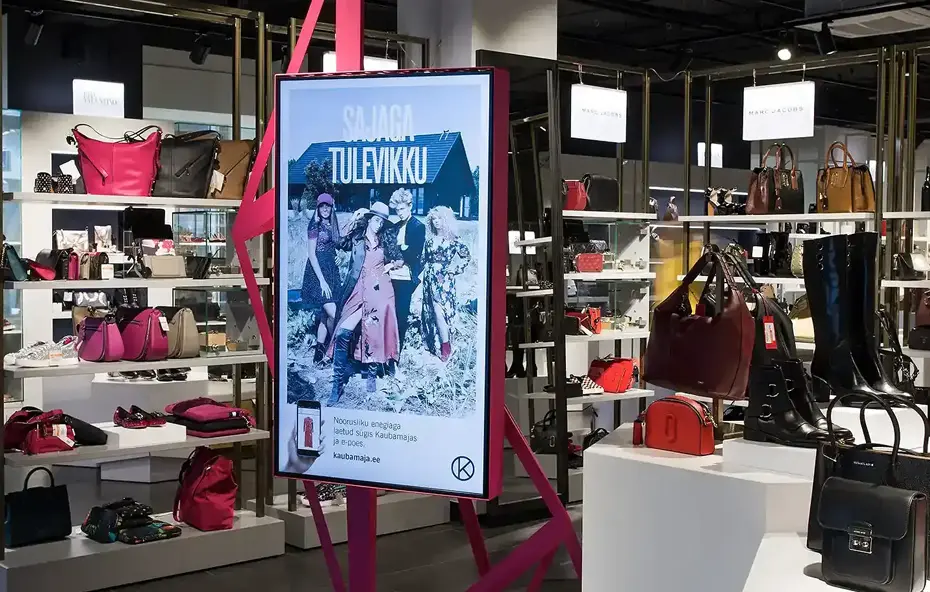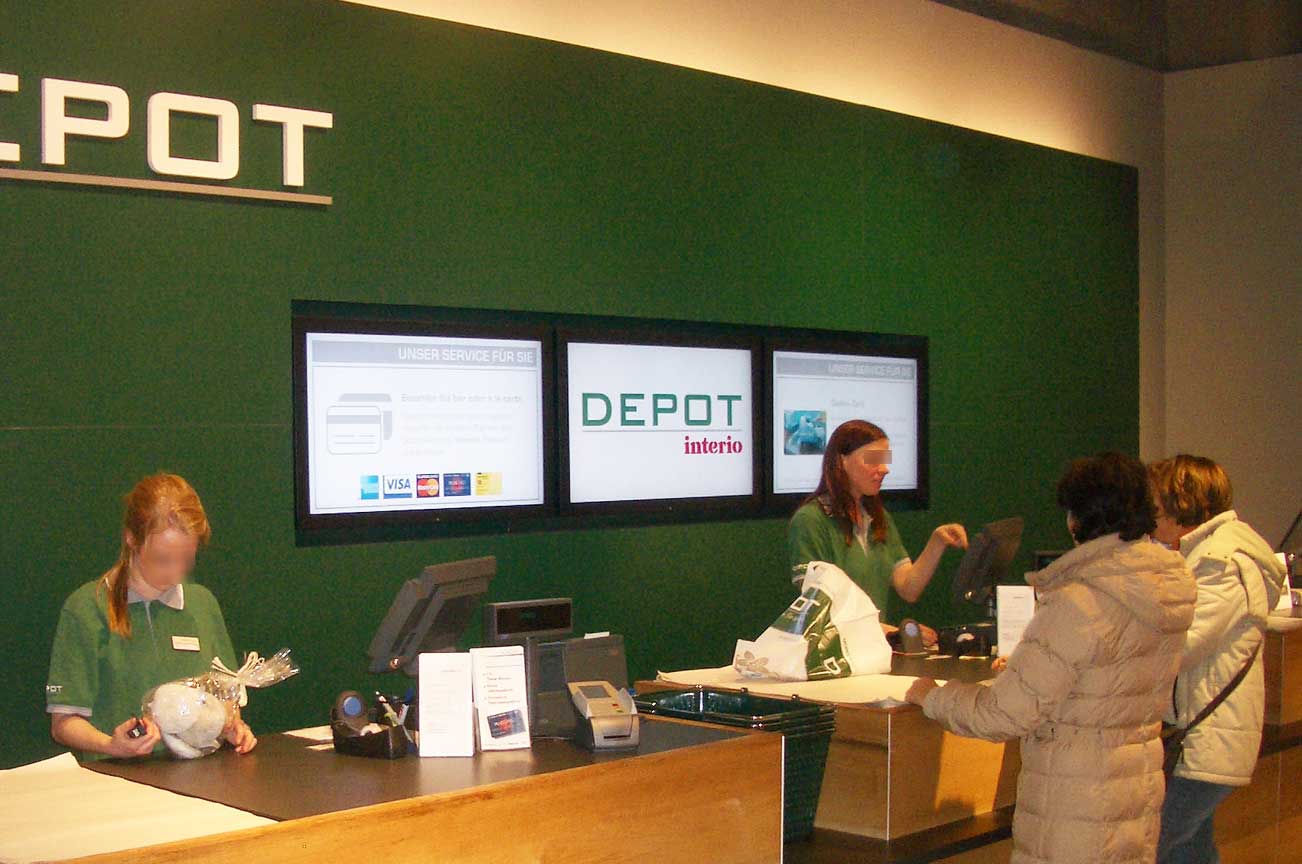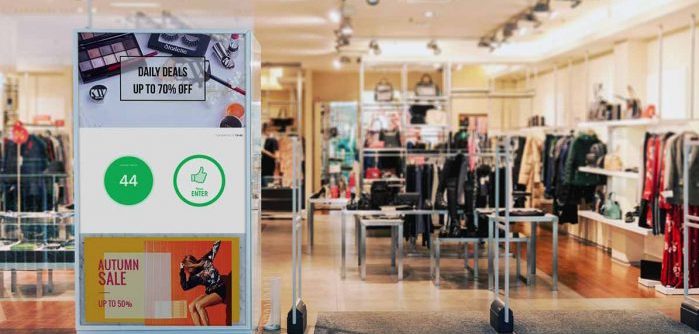In-Store Advertising Software for Brick-and-Mortar Retailers
Retailers, merchants, and brand owners face a growing battle on many fronts. While everyone’s talking about the negative impact of e-commerce on in-store sales, there are many other forces at play.
So what’s a retail merchant to do? They rely on in-store advertising software.
The struggle to reinvent in-store shopping
By now, we’ve all heard the story. Retail store traffic is on the decline. Many well-established retail chains are struggling, so stores need to reinvent themselves and become “destinations”.
This explains why retail executives are embracing in-store advertising software. The goal is to engage shoppers, increase impulse buys, influence purchasing decisions, and offer a more memorable store experience.
So, let’s explore how retailers are using retail digital signage displays and digital signage to reshape the in-person shopping experience.
Hint: It’s not all about e-commerce
Many industry experts have blamed Amazon and similar online retailers for decreases in in-store foot traffic. Upon closer inspection, we find there are many factors impacting brick-and-mortar retailing and e-commerce isn’t the biggest threat.
Surprisingly, millennials have a greater impact on in-person shopping activity than e-commerce. In fact, they are becoming the largest group of in-store consumers, as baby boomers start to retire in droves.
It’s important for merchants and retail store owners to understand what drives this phenomenon.
To begin with, millennials don’t shop like their parents. They’re a generation that grew up with modern tech. It’s no wonder they are comfortable using smartphones to pay for purchases. They also have no issue scanning QR codes on a digital signage screen to receive discount coupons.
For millennials, self-checkouts are no big deal. They would rather scan and bag their own purchases than wait in line for a cashier. Millennials embrace change, which is why they help drive new retail store technologies.
Millennials also thrive on social media. It’s a group that likes to feel appreciated and pampered. They will take the time to post reviews online, and will share their shopping experiences with friends and family via Facebook and Twitter. While millennials may be interested in your products, it’s your marketing strategy that will ultimately make the sale.
Millennials crave a personalized shopping experience that traditional retail methods can’t provide. Their influence is growing, which explains why store owners are increasingly trying to satisfy their needs.

Improving the in-store experience
Current in-store shopping trends aren’t only shaped by millennial shoppers. Everyone likes to feel recognized and appreciated, so it’s important for retailers to cast a wide net.
It’s now common knowledge that well-informed shoppers tend to buy more, and they are more likely to return if they enjoyed the experience. Since everyone wants to feel special, retail stores must make a meaningful effort to deliver an experience that meets or exceeds each customer’s expectations.
This is why retailers and merchants have been turning to in-store advertising software in ever greater numbers.
Today’s in-store advertising is at the core of the modern retail experience. It’s used to power digital signage screens and deliver a steady stream of engaging content:
- Social media feeds related to a specific brand or product group.
- News about the retailer and its social/ecological/charitable activities.
- Employee engagement content that features staff recognition and milestones.
- Information about the retailer’s loyalty programs and enhanced store services.
The evolution of in-store advertising signage
Successful retailers know the importance of delivering the right message at the point of purchase. The proper use of in-store advertising signage is critical to every store’s success.
When properly executed, in-store advertising signage can have a very positive impact on many store areas.
Take, for example, staffing. Since the dawn of retail, people have been complaining about the lack of sales staff. It’s a common refrain… “There never seem to be enough sales associates in the store to service all the customers”.
In-store advertising signage helps resolve this age-old issue by providing useful information right at the point of decision, even when there are no employees around.
In order to be effective, in-store advertising signage needs to be current and engaging while delivering a clear call to action.
Let’s that a look at the medium’s evolution.
Back in the ’90s, CRT displays were commonplace in retail stores. Retailers would often rely on ordinary TV sets to deliver in-store advertising content to shoppers. TVs were readily available, affordable, and easy to replace whenever they broke down.
The internet was still in its early beginnings so retailers used closed-circuit TV and VCR tapes to broadcast their content across their stores. VCR technology was inexpensive which enabled smaller retail chains to get in on the action. TV screens started popping up everywhere!
Over time, the internet matured and connection speeds increased exponentially. Closed-circuit TV and VCR tapes became obsolete overnight. This is when retailers started installing commercial LCD panels and video wall displays to deliver real-time advertising content to their customers.

The power of in-store advertising
In-store advertising helps retailers solve their most complex challenges.
- It serves customers when store associates aren’t available
- It reduces the time waiting for service
- It helps shoppers make better-informed decisions
- It turns browsers into customers by displaying informative and engaging content
The term “in-store advertising” is quite appropriate because these digital signage displays are meant to show a mix of product announcements, promotions, and useful consumer information within the store itself. The programming shown on the screen contains social media messages and infotainment like local news, weather, and other useful information.
By using in-store advertising software, store management can fine-tune their pricing to match local competitors as well as e-commerce retailers. Take the example of overstock merchandise. In the past, overstock would be shipped back to vendors at a discount, or redistributed across other stores within the chain.
Today stores, where they be department store chains, retail grocery stores or small businesses, can simply promote overstocked items locally on their digital signage displays. They don’t have to pay shipping and handling costs, and they don’t have to wait. Updating a promotion across an entire store chain takes a few seconds.
In-store advertising software empowers retailers with tools that let them communicate better, and engage a new generation of shoppers.
Recommended Hardware
The Navori Stix 3700 emerges as a pivotal hardware solution to bolster the objectives articulated in the blog post regarding the significance of in-store advertising software. Engineered with precision for digital signage applications, the Stix 3700 seamlessly integrates into retail environments, facilitating fluid playback of captivating content essential for engaging modern shoppers. Its robust performance ensures uninterrupted delivery of dynamic media elements, ranging from social media feeds to promotional videos, aligning perfectly with the aim to reshape the in-person shopping experience by immersing customers in a visually stimulating environment.
Furthermore, the Stix 3700 extends beyond mere playback capabilities, offering remote management functionalities that empower retailers to maintain agility in their marketing strategies. With Navori’s intuitive management platform, retailers can effortlessly schedule content updates and monitor displays remotely, enabling swift adaptations to evolving consumer preferences and market dynamics. The Stix 3700’s interactive features, including support for QR code scanning and touchscreen integration, cater to the tech-savvy preferences of millennials, fostering a personalized shopping journey that resonates with this influential demographic. In essence, the Navori Stix 3700 serves as a cost-effective yet powerful tool for retailers striving to enhance the in-store experience and cultivate lasting connections with their customers.
